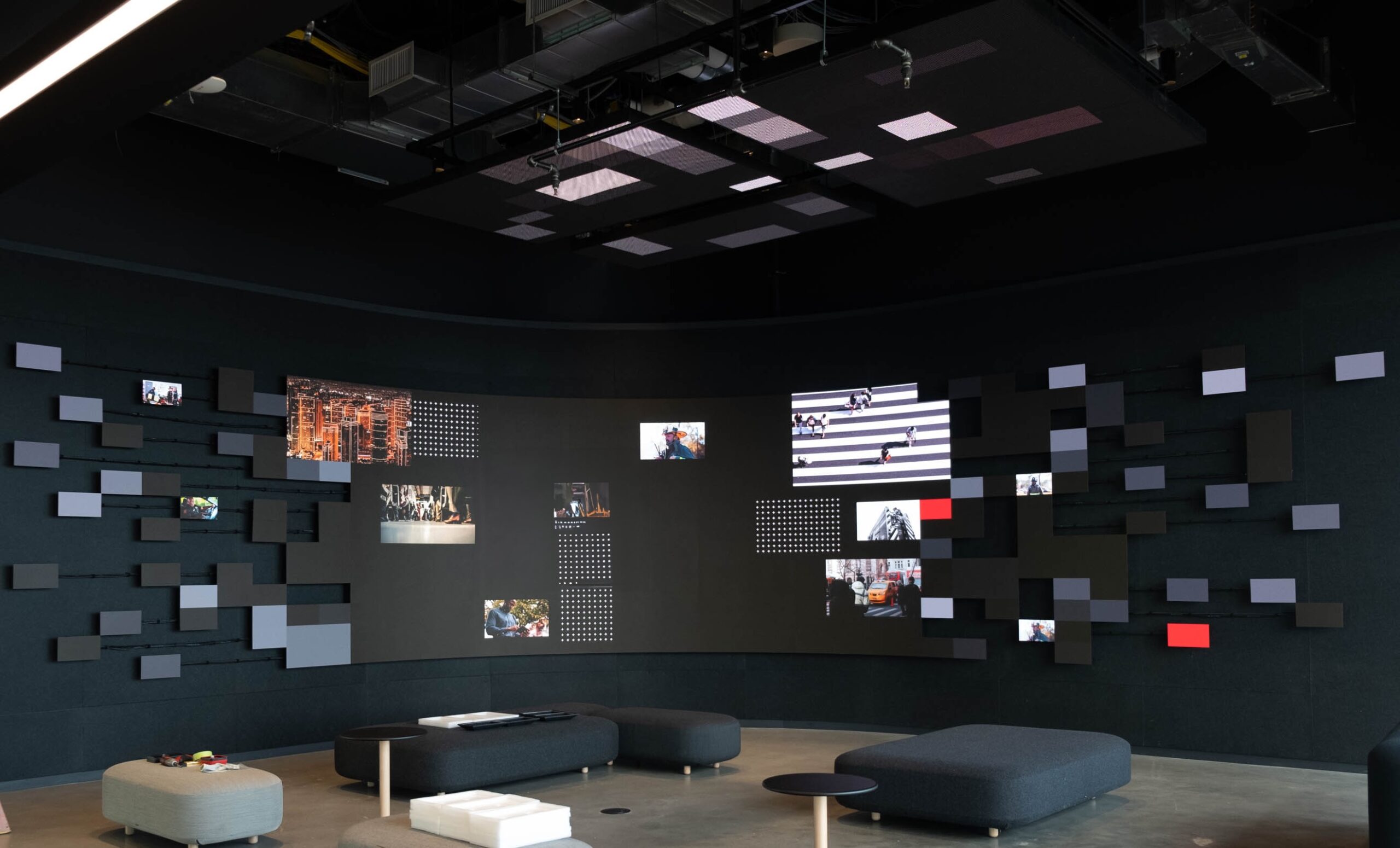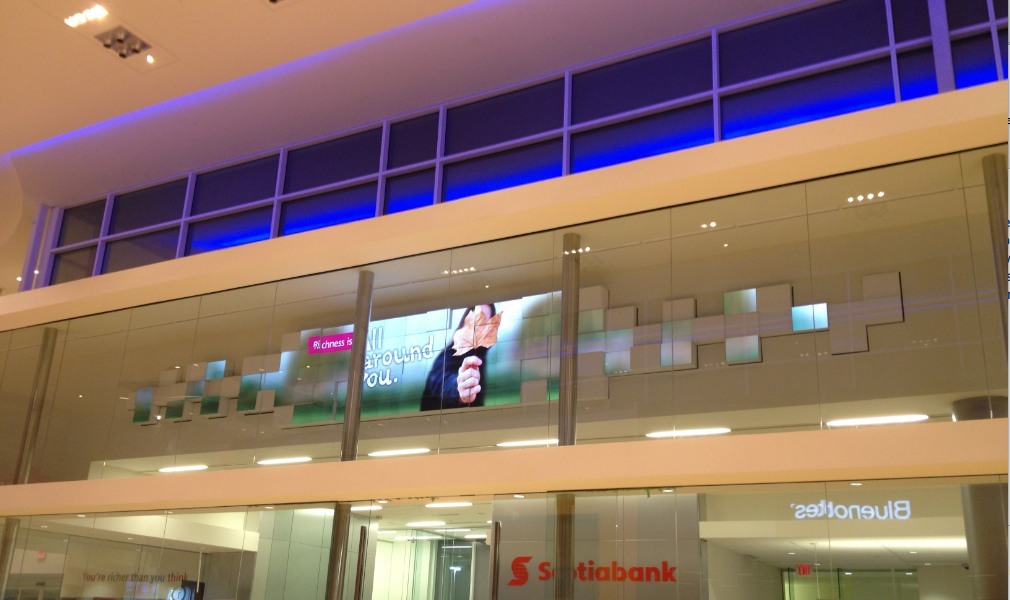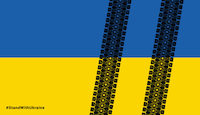
Deconstructed, Industrial-Look LED Video Wall Lights Up At Innovation Hub
March 22, 2024 by Dave Haynes
Here’s a very different looking take on a corporate office video wall – a “deconstructed” curved corner set-up that was designed to hint at circuit boards.
It is an “Innovation Hub” for an unnamed company, with the space designed and delivered by the digital wing of the giant architecture firm Gensler, and using Nanolumen’s LED display tech. As just about any marketer in the digital signage/pro AV industry knows, getting permissions to include whale client names in PR is often somewhere between tough and never-gonna-happen. Hence the unnamed aspect.
The case study write-up on the project gets into the technical weeds on what was done, and how:
The concept was to have a main 16:9 display splayed out from the main display to create an industrial, deconstructed video wall display that looked like a circuit board. It needed to have a clean aesthetic, but also seem industrial with parts and cabling exposed – like a TV had exploded … intentionally. The industry has coined a phrase for this as “Tech-o-rating,” and the result was a very tech-forward design with form and functionality.
Former industrial designer and product developer Dan Rossborough loves digging into complex projects at Nanolumens. The Director of Nanolumens’ Special Projects Group immediately noted that this project could have many challenges, but he was up to the task.
It took four months to develop a new product topology for Nanolumens’ Nixel, which would serve as the base of this design. A mockup of a mitered chassis on a single Nixel was created to emulate independent “Orphan Nixels,” a phrase Dan would coin to describe the Nixel satellite displays that were independent of the main video display.
Together with Nanolumens’ R&D team, the SPG developed a “daughter board” that could be affixed to the back of a Nixel. They attached a receive card so that it could be treated as if it were a full array. This bespoke idea left dealing with power and data ports simple.
The stand-alone Nixels have their own chassis and on-board data to allow you to stretch and form any array you can imagine, each programmed with its own offset on two coordinated 4K content rasters (32:9 aspect ratio). The Orphan Nixels, housed on bespoke 3D printed FDM chassis, are fully-front-serviceable on 6-axis adjustable telescoping aluminum mount brackets and power/data tethers on rods to the main body. The main display body: mitered top, bottom, and sides to make the whole array appear to be floating, all made possible by our patented Frame-and-Skin Topology.
The Orphan Nixel Chassis were 3D printed and designed with room for the daughter board and Nixel. A custom mount bracket with four axis-adjustment with pitch and yaw to precisely calibrate the new PCB designed Nixels. Prior to using these 3D printed chassis, they were tested with thermal dynamics in mind, and the design proved to be solid. This complex design required the team to work within the constraints of a concave sound attenuating wall made with MDF. Nanolumens couldn’t mount to it, so they had to mount through it. Spacers were used to compress the substrate behind it to allow for precise alignment of the main display and its orphan Nixels. These orphaned 1.5mm Nixels are aligned independently with a tolerance of less than a tenth of a millimeter on a grid face that aligns them precisely.
Another element that aided in the design phase was a mock-up developed at Gensler’s Design Lab, with a section approximately 8 feet wide by 2 feet tall as proof of concept. Nanolumens also hired a media artist to aid in the content mapping of this complex video wall.
The main wall uses 1.5mm pitch LED, while the ceiling-suspended displays are lower-rez 9mm.
These exploded designs are always visually interesting. It reminds me of something done years and years ago for a bank at a Toronto shopping mall, using Christie’s original rear-projection MicroTiles.

I do wonder if the walls have any functional attributes – like casting videos or collaboration – or maybe it is purely for the design side of experience.




Leave a comment